
Guide to the Icelandic Krona (with a currency converter!)

- Currency Exchange Widget
- FAQs About Currency in Iceland
- What is the currency used in Iceland?
- Can I use foreign currency in Iceland?
- Where can I exchange currency in Iceland?
- Is it better to exchange currency in Iceland or before arriving?
- What is the exchange rate for Icelandic króna?
- Are credit cards widely accepted in Iceland?
- Can I withdraw Icelandic króna from ATMs in Iceland?
- Can I exchange Icelandic króna back to my home currency?
- Is it safe to carry cash in Iceland?
- Money in Iceland: The Icelandic Krona
- The Icelandic Krona and other Krona Currencies in Europe
- History of the Currency of Iceland
- Icelandic Currency Through the Ages
- Iceland's Currency Crisis in 2008
- Historical Figures Gracing the Icelandic Krona Banknotes
- Jón Sigurðsson - 500 Krona
- Brynjólfur Sveinsson - 1,000 Krona
- Jóhannes Kjarval - 2,000 Krona
- Ragnheiður Jónsdottir - 5,000 Krona
- Jónas Hallgrímsson - 10,000 Krona
- How Much Does It Cost to Stay in Iceland?
- Tips for Saving Money in Iceland
- Book Everything in Advance
- Take the Bus When Possible
- Stay at a Campsite or a Hostel Instead of a Hotel
- Always Bring a Refillable Water Bottle
- Useful Information About Currency in Iceland
- Credit Cards vs. Money
- Exchanging Your Currency
- ATMs in Iceland
- About Tipping in Iceland
- Shopping Tax-Free
- Frequently Asked Questions About Money in Iceland
- What's the Best Currency To Bring to Iceland?
- How Much Money Should You Bring When You Go to Iceland?
- What Are the Different Ways To Pay in Iceland?
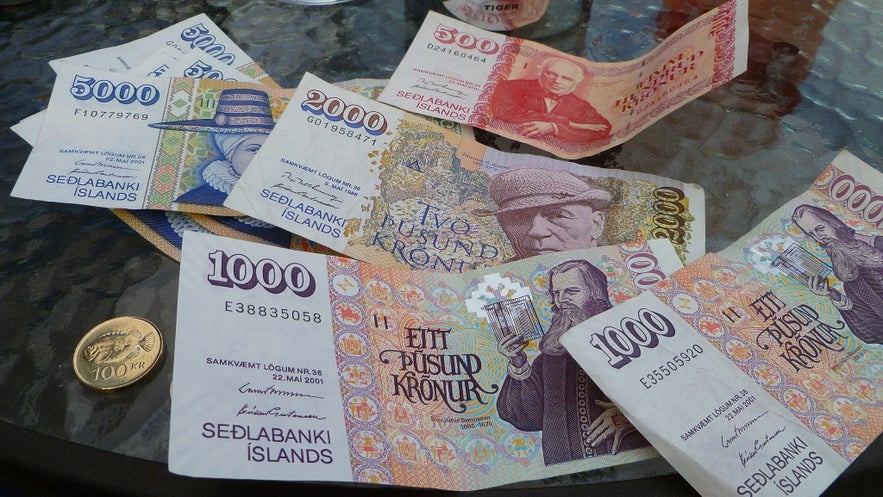
Iceland is a small island nation in Western Europe famous for its breathtaking beauty and high volcanic activity. The country is home to spectacular nature, like beautiful waterfalls, hot springs, black sand beaches, and many more natural wonders.
But Iceland is also famous for being an expensive destination to visit. Therefore, it's essential for you to learn everything you need to know about the money and currency in Iceland before you go. And see this article about the best cheap things to do in Reykjavik, the capital of Iceland.
Photo above from Flickr, by A.Currell
Currency Exchange Widget
Use this widget to compare the currency exchange rate of the Icelandic króna to many other currencies. By entering the amount, you can also figure out the total price of items listed in Icelandic króna. In the website header, you can also choose to change all prices on our website to your preferred currency.
FAQs About Currency in Iceland
What is the currency used in Iceland?
The currency used in Iceland is the Icelandic króna (ISK).
Can I use foreign currency in Iceland?
It is not recommended to use foreign currency in Iceland as it generally not be accepted. It is best to exchange your currency for Icelandic króna.
Where can I exchange currency in Iceland?
You can exchange currency at Keflavik International Airport, banks, exchange offices, and some hotels in Iceland. There are also ATMs available in most towns and cities.
Is it better to exchange currency in Iceland or before arriving?
It is recommended to exchange your currency for Icelandic króna before arriving in Iceland to avoid unfavorable exchange rates. If you need to change the currency in Iceland, you can do it at the airport, but exchange rates may be more favorable in banks.
What is the exchange rate for Icelandic króna?
The exchange rate for Icelandic króna varies depending on the currency and exchange location, but as of May 2024, one US dollar (USD) is roughly equivalent to around 139 ISK. This changes frequently, so for the latest and most up-to-date information about the exchange rate of the Icelandic króna, we recommend checking the Icelandic central bank website or using the widget above.
Are credit cards widely accepted in Iceland?
Yes, credit cards are widely accepted in Iceland, especially Visa and Mastercard. However, it is still recommended to carry some cash for small purchases. You may run into issues if you have American Express, as it's not accepted everywhere.
Can I withdraw Icelandic króna from ATMs in Iceland?
Yes, you can withdraw Icelandic króna from ATMs in Iceland. However, some ATMs may charge a withdrawal fee.
Can I exchange Icelandic króna back to my home currency?
Yes, you can exchange Icelandic króna back to your home currency at banks and exchange offices in Iceland. But it is recommended that you do so while in Iceland, as your local bank might not be able to exchange Icelandic króna.
Is it safe to carry cash in Iceland?
Iceland is generally a very safe country, but it is still recommended to be cautious when carrying cash and to keep it in a secure place.
Money in Iceland: The Icelandic Krona
Learning about the currency of Iceland is crucial if you're planning to visit the country. Knowing about it can help you with the most practical stuff, like knowing how much to pay for your transportation fee, how to shop for groceries, and how to avoid the worst tourist traps.
The official currency of Iceland, the Icelandic krona, can be written as ISK or with the currency symbol kr. Króna is the singular form of the currency, while krónur is its plural form.
The Icelandic krona comes in both coins and bills or banknotes. The coins come in five denominations of 1, 5, 10, 50, and 100 kronur.
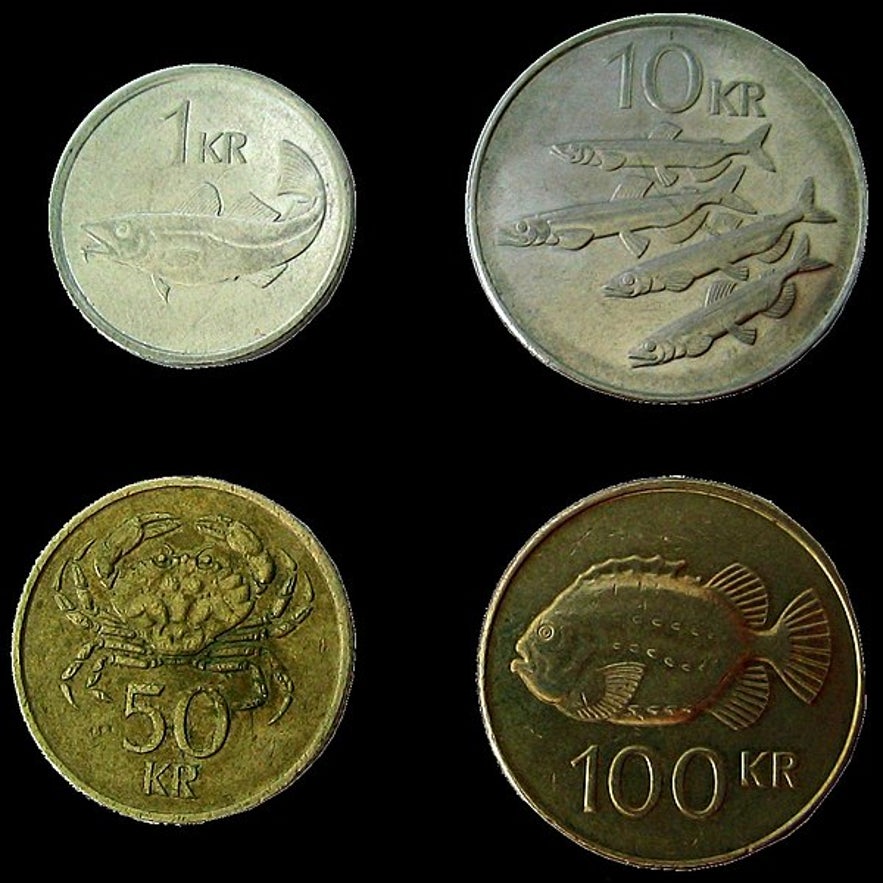
Photo from Wikimedia, Creative Commons, by Thorsten Schmidt. No edits made.
Regarding the bills, they also come in five denominations but in higher amounts. These denominations are 500, 1,000, 2,000, 5,000, and 10,000 kr.
The Central Bank of Iceland manages and issues the currency of Iceland. They're also in charge of maintaining the country's financial policies and stability.
The Icelandic Krona and other Krona Currencies in Europe
The Icelandic krona is used in Iceland. However, note that the term is also used in other European countries, especially in other Scandinavian nations, such as Sweden, Denmark, and Greenland.
In Sweden, they use the Swedish krona, while in Greenland and Denmark, they use the Danish krone. Although they sound almost the same, note that Iceland's currency differs from the countries mentioned above.
Aside from being called the Icelandic krona, the currency of Iceland is not pinned to another currency. For example, the Danish krone used by Greenland and Denmark is tied to the Euro. As a result, Iceland's currency is better controlled by its nation.
History of the Currency of Iceland
Iceland was a territory of Denmark from the 14th century to the 19th century. However, it was only in the 1870s that the Danish krone was introduced in the country after replacing an older Danish currency, the rigsdaler.

At the beginning of the 20th century, Iceland became autonomous from Denmark. As a result, the Icelandic government started issuing the Icelandic krona, making it its official currency.
You can learn more about Denmark and Iceland's story through this complete history of Iceland.
Icelandic Currency Through the Ages
Iceland has been issuing banknotes since 1885. Its first banknotes are the 5, 10, and 50 kronur. However, it was only in the 1920s that Iceland started issuing coins, beginning with the 10 and 25 aurar (now obsolete).
In 1925 and 1926, five more coin denominations were added. These denominations are:
- 1 krona
- 2 krona
- 1 eyrir
- 2 aurar
- 5 aurar
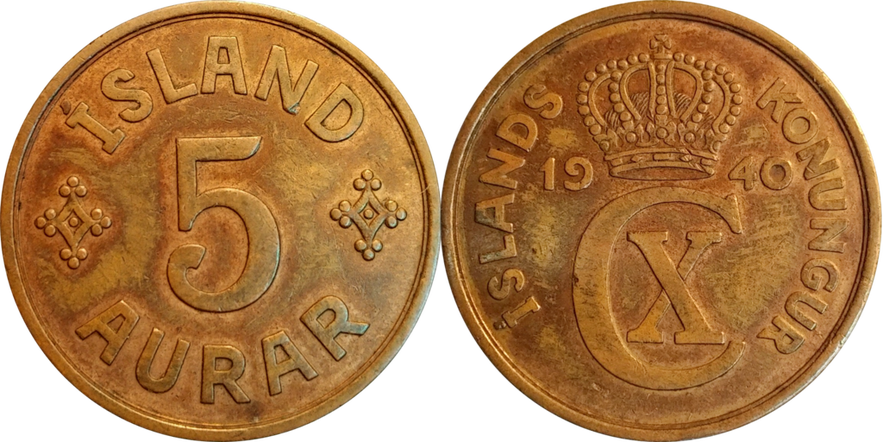
After the Second World War, in 1946, the Icelandic currency's coins were redesigned to remove the royal monogram of Denmark.
In 1981, Iceland revalued its currency and added new coins in 5, 10, and 50 aurar denominations. However, in 2003, all coins denominated in the aurar were taken out of circulation.
Iceland's Currency Crisis in 2008
Iceland is now one of the best places to live in the world. However, did you know it was hit exceptionally hard by the 2008 financial crisis?
In 2008, the world experienced a global financial crisis, significantly affecting many countries, including Iceland.
Three of Iceland's primary banks collapsed, resulting in the country's economic slump. Other factors, such as the banks' inability to finance short-term loans and people simultaneously withdrawing their money due to fear, added to the problem.
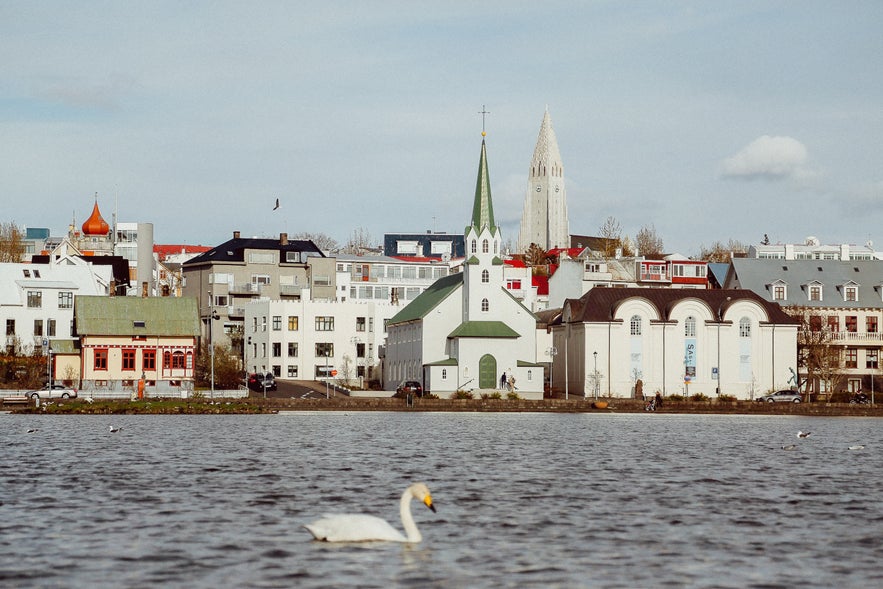 Photo from Unsplash, by Evelyn Paris. No edits made.
Photo from Unsplash, by Evelyn Paris. No edits made.
In addition, Iceland's currency lost a lot of value against the Euro before eventually collapsing.
Due to these difficulties, the country got emergency funding from the International Monetary Fund (IMF), and currency trading was restricted.
The changes were able to help the country get back on its feet, and Iceland's currency has remained relatively stable.
Historical Figures Gracing the Icelandic Krona Banknotes
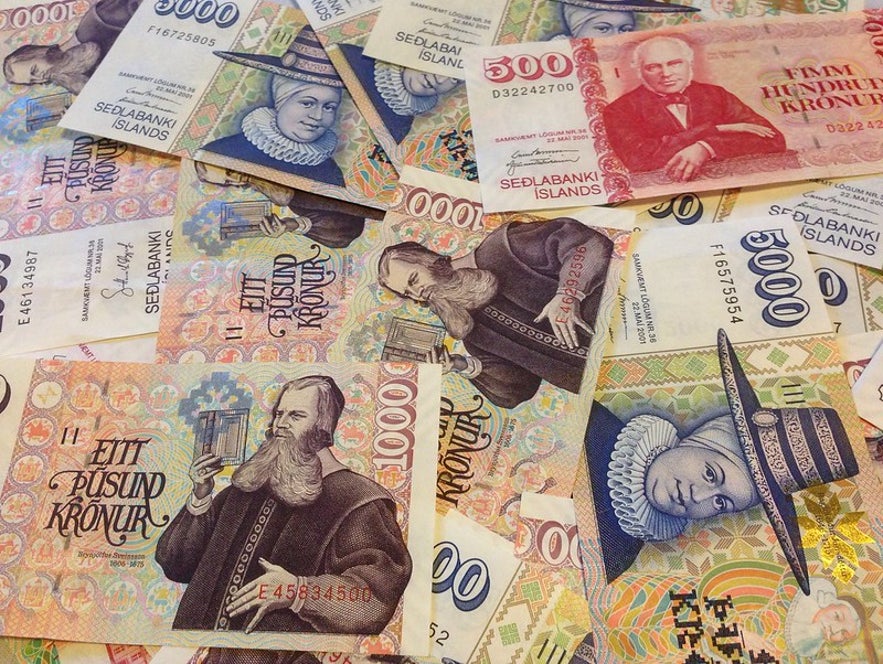 Photo from Flickr, by Tom Jarrett. No edits made.
Photo from Flickr, by Tom Jarrett. No edits made.
Currently, Iceland's currency has five banknotes in circulation.
If you look closely, you'll notice that each bill features an image of a person. These people are some of Iceland's most famous and prominent historical figures.
Meanwhile, activities or locations related to the main figure in the banknote are on the other side of each Icelandic krona bill.
Here are the names and contributions of these historical figures to Iceland.
Jón Sigurðsson - 500 Krona
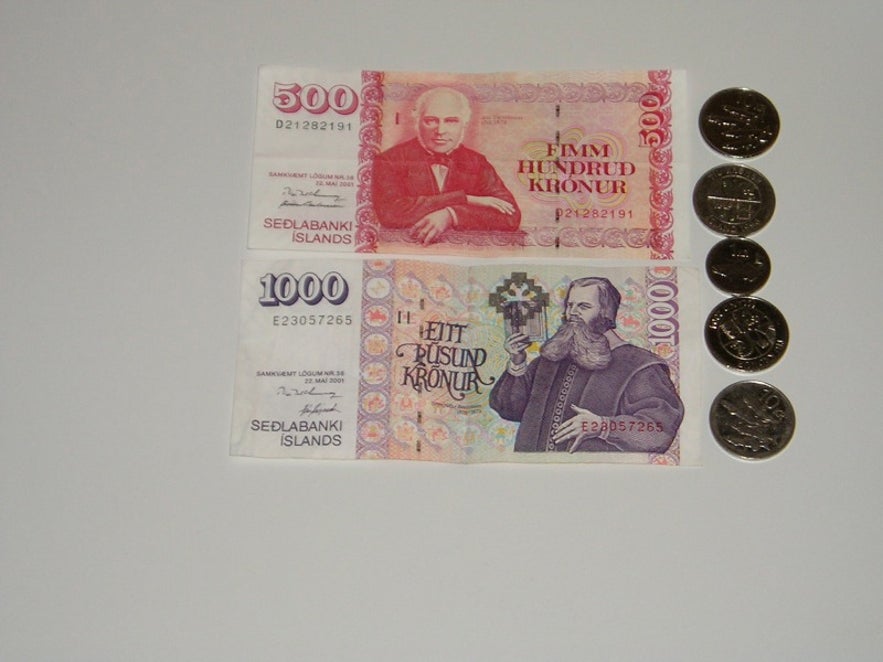 Photo from Flickr, by Benjamin Friedman. No edits made.
Photo from Flickr, by Benjamin Friedman. No edits made.
Jón Sigurðsson (1811-1879) was one of the leading figures in Iceland's independence movement against Denmark in the 19th century. Iceland's Independence Day is celebrated on his birthday, June 17th, and there's a statue of him facing the Althingi parliament building.
The banknote is color red.
On one side of the banknote, you'll see Jón Sigurðsson. However, on its back is a usual scene of him writing on his desk, surrounded by books and a tapestry behind him.
Brynjólfur Sveinsson - 1,000 Krona
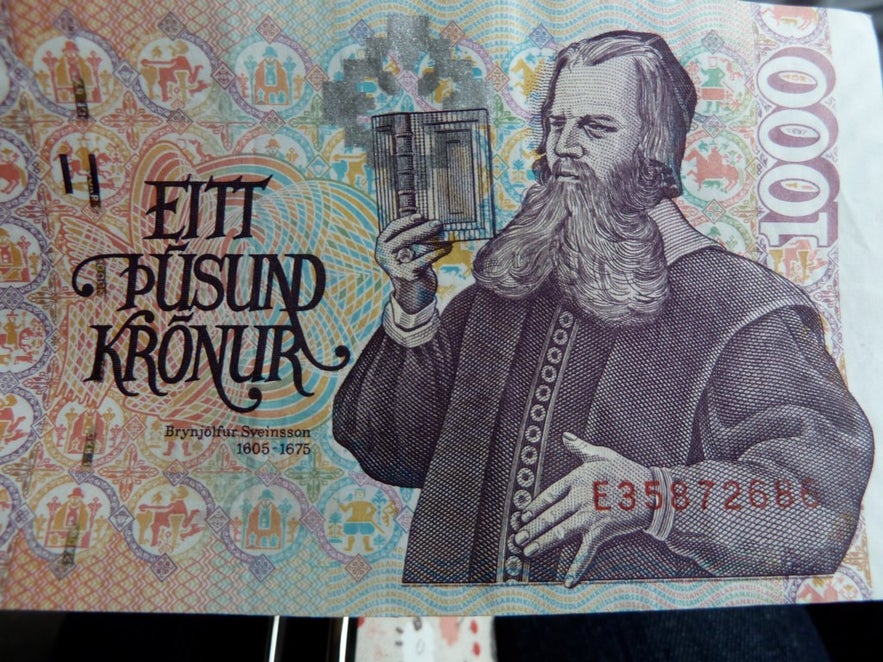 Photo from Flickr, by Empyreal. No edits made.
Photo from Flickr, by Empyreal. No edits made.
Brynjólfur Sveinsson (1605-1675) was a bishop in the 17th century known for his intelligence and stubbornness. Aside from that, he was a champion of the clergy and advocated the rights of the people involved. In some writings, he's described as a genius debater.
He helped build a cathedral in Skalholt, known as Brynjólfskirkja, which is pictured on the back of the banknote.
The 1,000 krona banknote has a predominantly purple color on a multicolored underprint.
Jóhannes Kjarval - 2,000 Krona
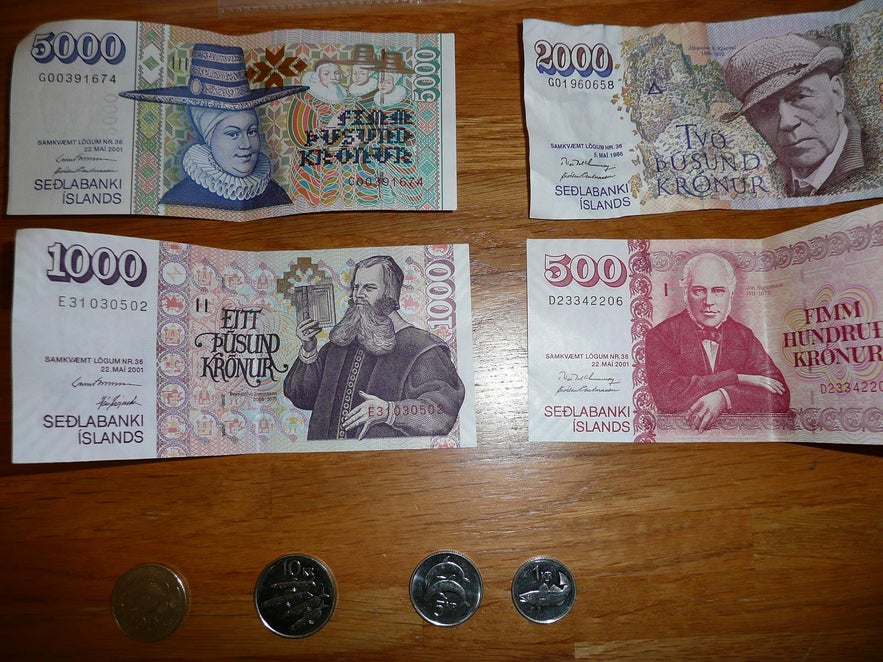 Photo from Flickr, by James McNally. No edits made.
Photo from Flickr, by James McNally. No edits made.
Jóhannes Kjarval was a pioneer of Icelandic art in the 20th century and one of the most revered artists in Iceland. He created thousands of artworks, including his interpretation of Iceland's nature. Many of these are displayed at the Kjarvalsstadir art museum. His artworks include styles from various art movements, such as expressionism, abstract, and cubism.
The 2,000 krona banknote has a blue-violet and yellow print.
At the front is an image of Kjarval and a detail from his "Outside and Inside" painting. Meanwhile, at the back are details from his artworks, "Yearning for Flight" and "Woman and Flowers."
Ragnheiður Jónsdottir - 5,000 Krona
 Photo from Flickr, by Kara Brugman. No edits made.
Photo from Flickr, by Kara Brugman. No edits made.
Ragnheiður Jónsdottir was a beloved 17th-century craftswoman known for her embroidery work. She came from a powerful family and was married to a bishop. In these times, bishops and their families were some of the most influential people in the country.
The 5000 krona denomination is the only currency in Iceland with a woman figure printed on it.
At the front is Ragnheiður, with her husband and the two of his previous wives. The image is based on a historic painting that is on display at the National Museum of Iceland. Meanwhile, at the back is Ragnheiður, instructing two women on embroidery.
Jónas Hallgrímsson - 10,000 Krona
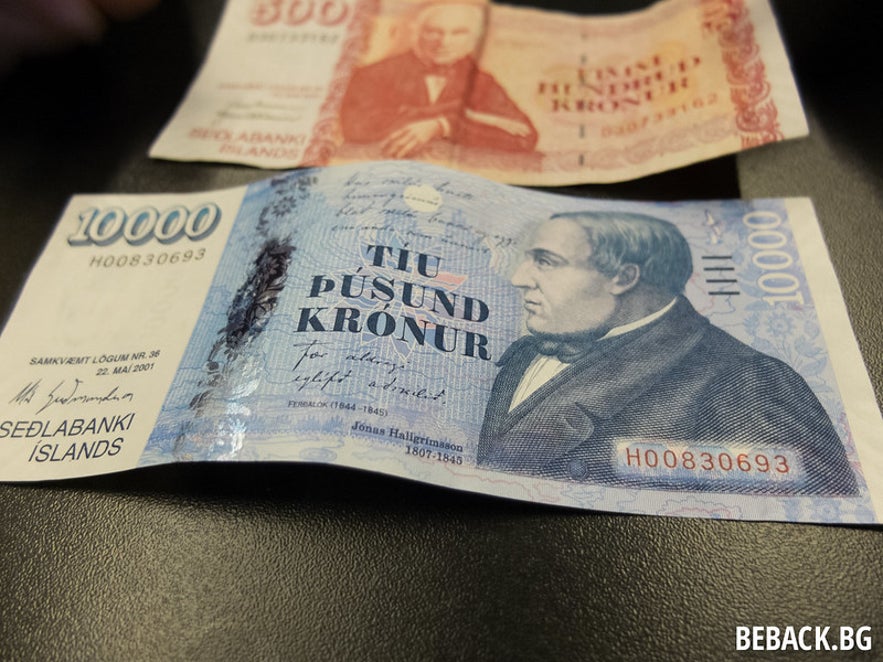 Photo from Flickr, by Boyko Blagoev. No edits made.
Photo from Flickr, by Boyko Blagoev. No edits made.
Jónas Hallgrímsson is one of the most admired poets in Iceland. He's a Romantic poet who helped usher in a new movement in Iceland's poetry scene.
He also helped found the Icelandic magazine Fjölnir, invoking nationalism in the citizens to resist the Danish rule during his time.
The banknote has a predominantly blue color.
At the front is an image of Hallgrimsson. Meanwhile, on the other side is an illustration of a plover bird and his poem, "Skjaldbreidur Mountain."
How Much Does It Cost to Stay in Iceland?
 How expensive is Iceland? The answer is Iceland is a relatively costly place to live in. In fact, according to the World Population Review, as of August 2022, it's listed in the top ten most expensive countries to live in.
How expensive is Iceland? The answer is Iceland is a relatively costly place to live in. In fact, according to the World Population Review, as of August 2022, it's listed in the top ten most expensive countries to live in.
Aside from housing, food can be expensive in Iceland because the country greatly relies on imported goods.
Meanwhile, the estimated cost for foreign visitors can vary between 100 USD and 200 USD per day. The price depends on the type of accommodation, transportation, and meals.
 Photo from Wikimedia, Creative Commons, by Richard Eriksson. No edits made.
Photo from Wikimedia, Creative Commons, by Richard Eriksson. No edits made.
On accommodations, it can cost as low as 35 USD per night or as high as 300 USD per night. Depending on the area and amenities of each accommodation, the price can still go much higher or lower.
Food at an inexpensive restaurant can cost between 18 and 22 USD per meal.
When riding Reykjavik city buses, a single ticket costs around 5 USD, while for those using a rental car, the gas can cost about 2 USD per liter.
Fortunately, there are many affordable ways to enjoy Iceland. One of the best-kept secrets is Guide to Iceland's VIP Club. As a customer of Guide to Iceland, you can save money at some of the best restaurants, bars, shops, and experiences in the country!
Additionally, you can swim in its hot springs, join affordable sightseeing tours, or independently hunt for the beautiful northern lights in Iceland.
Tips for Saving Money in Iceland
 Iceland can be expensive. However, as a traveler, there are ways to help you save money. Apart from being a part of our VIP club to enjoy some exclusive discounts to make your trip not only unforgettable but also budget-friendly, here are some additional tips to help you save during your adventure.
Iceland can be expensive. However, as a traveler, there are ways to help you save money. Apart from being a part of our VIP club to enjoy some exclusive discounts to make your trip not only unforgettable but also budget-friendly, here are some additional tips to help you save during your adventure.
Book Everything in Advance
If you want to explore, make sure to book everything in advance. This includes renting a car in Iceland, booking a tour, and even booking airport transfers.
When you book in advance, you have more time to compare different options and get the cheapest offer. Also, the earlier you book, the better deal you'll get from various car rental and travel companies.
You can also check our affordable car rentals in Iceland if you want to start looking for one now.

Take the Bus When Possible
Car rentals are one of the best ways to travel and reach different parts of Iceland. However, if you're traveling alone, car rentals can be expensive. Fortunately, you can also travel by bus.
Straeto buses operate across Reykjavik city and the whole Capital Region.
You can pay using your debit or credit card and cash when you board a bus in Reykjavik.
There are also busses that take you directly to your chosen destination. For example, this Blue Lagoon transportation from Keflavik airport allows convenient transfer at an affordable price.
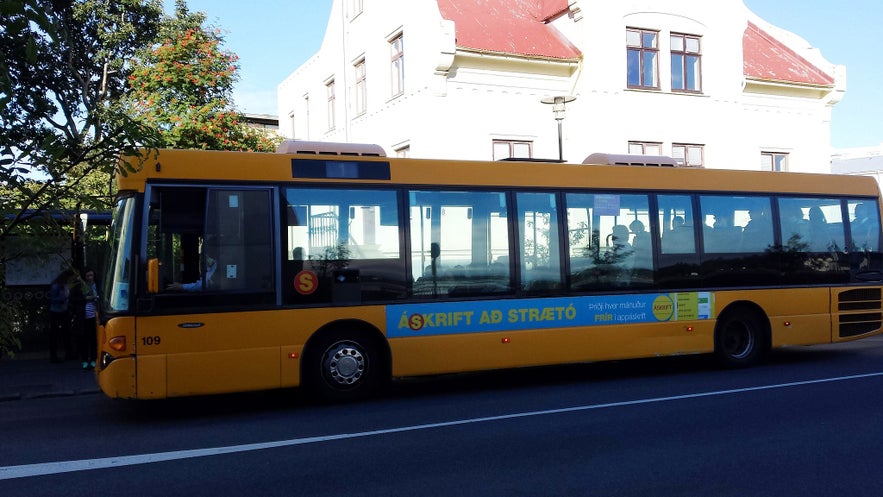 Photo from Wikimedia, Creative Commons, by Raf24. No edits made.
Photo from Wikimedia, Creative Commons, by Raf24. No edits made.
Stay at a Campsite or a Hostel Instead of a Hotel
There are many hotels in Iceland. However, hotels in Iceland can be expensive and too much if you're trying to budget.
If you want to stay at a place for a lower cost, check out campsites or hostels in Iceland. These options can help you cut your accommodation expenses by almost half.
Hostels often have a common area, which allows you to make friends on your travels, and a kitchen so you can cook your meals.
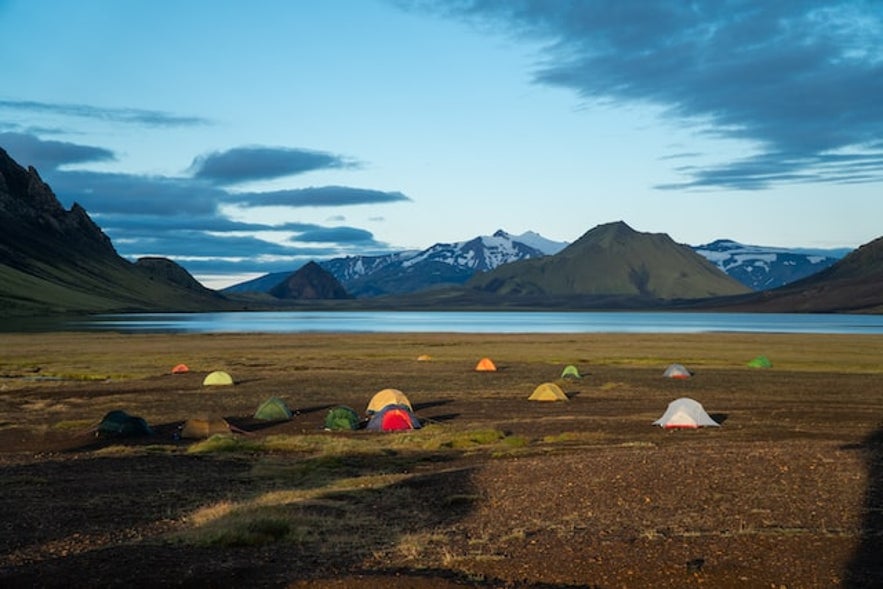 Photo from Unsplash, by Pavel Brodsky. No edits made.
Photo from Unsplash, by Pavel Brodsky. No edits made.
Meanwhile, campsites are a great place to stay if you want to visit Iceland's natural attractions and immerse in them. Aside from being affordable, campsites have their own bathroom, showers, and electricity. Many are even nearby shops and restaurants.
This is a good option if you're renting a campervan or motorhome in Iceland.
Check out our guide to camping in Iceland if you want to learn more about it.
Always Bring a Refillable Water Bottle
Bring a refillable water bottle or container anywhere you go so you can save money by not buying from the store.
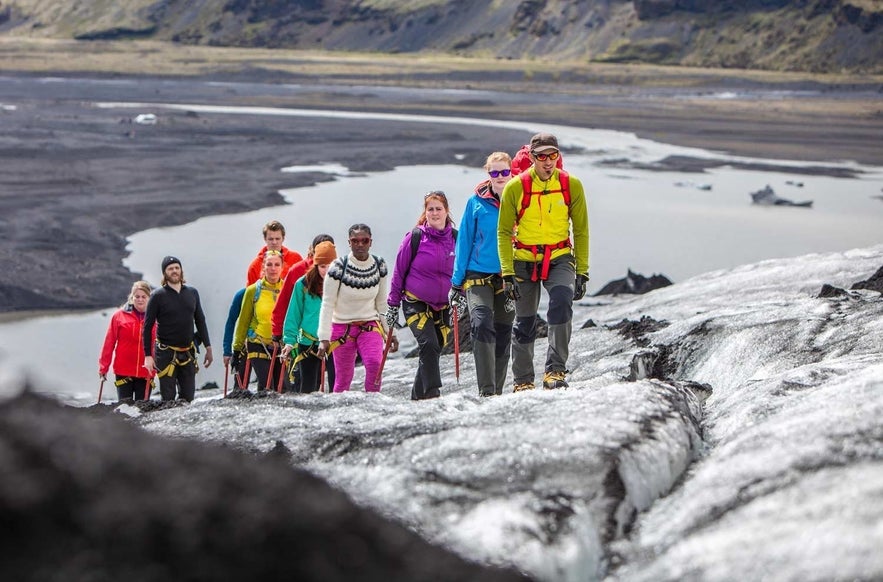
Whether planning to go on an outing or stay at a paid accommodation, having your own water container can help save you money.
Tap water in Iceland is clean and safe, so refill your water bottle as often as possible.
When outside, for example, on a trekking journey, there are also water sources you can use to refill your water.
Useful Information About Currency in Iceland
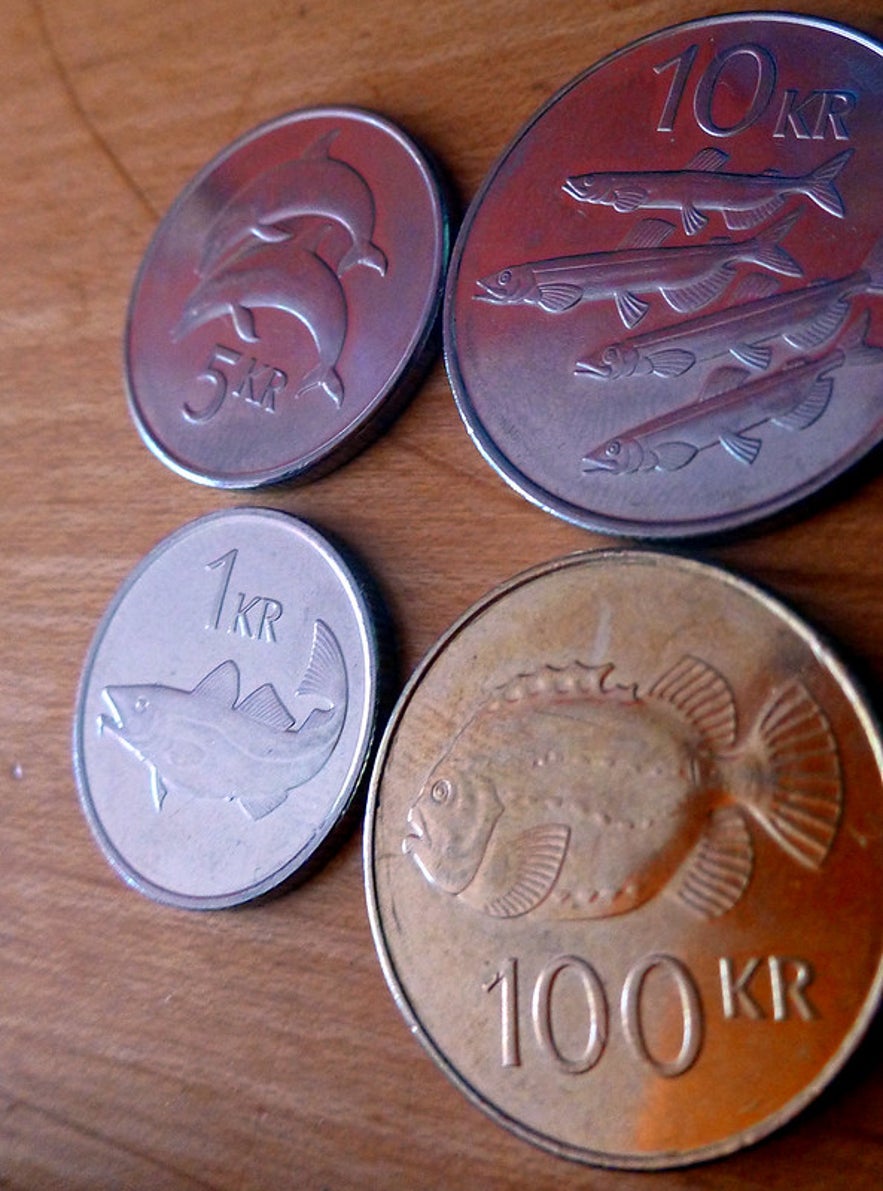 Photo from Flickr, by dervish. No edits made.
Photo from Flickr, by dervish. No edits made.
Knowing the standard practices in Iceland regarding money ensures less hassle on your part and better planning before your trip.
Learn what those practical pieces of information are so that you can apply them during your trip.
Credit Cards vs. Money
Cash is accepted in Iceland. However, most people who travel to Iceland, and even the locals, prefer to pay through a credit or debit card rather than cash.
Businesses, even with small purchases, accept cards. If you're planning to visit flea markets or farmers markets, however, it's good to have cash.
For credit cards, most businesses in Iceland accept major credit cards such as VISA and MasterCard. Meanwhile, not all businesses accept American Express. For debit cards, many accept Electron and Maestro cards.
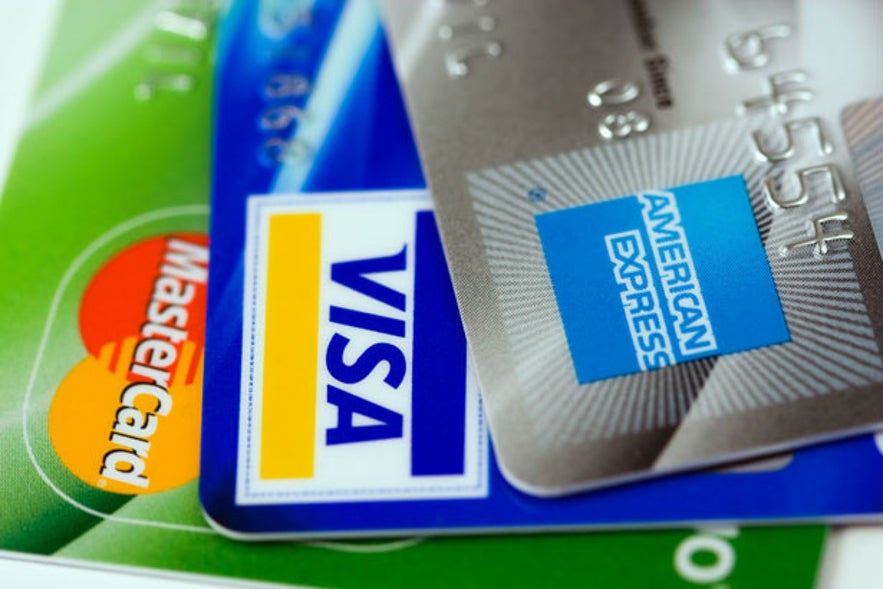 Photo from Wikimedia Creative Commons, by Petr Kratochvil. No edits made.
Photo from Wikimedia Creative Commons, by Petr Kratochvil. No edits made.
If you prefer to bring cash, there are ATMs you can use to withdraw money. Fortunately, ATMs are available anywhere in Iceland.
You can also exchange money from your home country before traveling to Iceland.
Exchanging Your Currency
The best place to exchange your currency in Iceland is through banks.
As soon as you land in Iceland at the Keflavik International Airport (KEF), you can change your currency at the bank.
 Photo from Wikimedia Creative Commons, by Antony-22. No edits made.
Photo from Wikimedia Creative Commons, by Antony-22. No edits made.
If you have a direct transfer to Reykjavik, there're many regular banks you can go to exchange your money, such as Arion Bank, Islandsbanki, and Landsbankinn.
ATMs in Iceland
Many Automated Teller Machines (ATMs) are available in Iceland, from its big cities to even its smaller villages. However, many of them are situated in the capital city of Reykjavik and at the Keflavik International Airport.
 Iceland is generally card-friendly, but bringing a few Icelandic kronurs in your wallet is always wise, especially when visiting the countryside. Moreover, make sure to withdraw money in Reykjavik or at the Keflavik airport. This can help you avoid future hassle and trouble if it's not accessible to get cash in other parts of Iceland.
Iceland is generally card-friendly, but bringing a few Icelandic kronurs in your wallet is always wise, especially when visiting the countryside. Moreover, make sure to withdraw money in Reykjavik or at the Keflavik airport. This can help you avoid future hassle and trouble if it's not accessible to get cash in other parts of Iceland.
About Tipping in Iceland
There is no tipping culture in Iceland, and they're not expected. However, if you want to give tips, you're free to do so.
Tour guides, in particular, appreciate being tipped.
Often, the total amount in many bills already includes service charges. In addition, Iceland's workers make decent wages in most industries. Thus, tipping is not as crucial as in other countries such as the US.
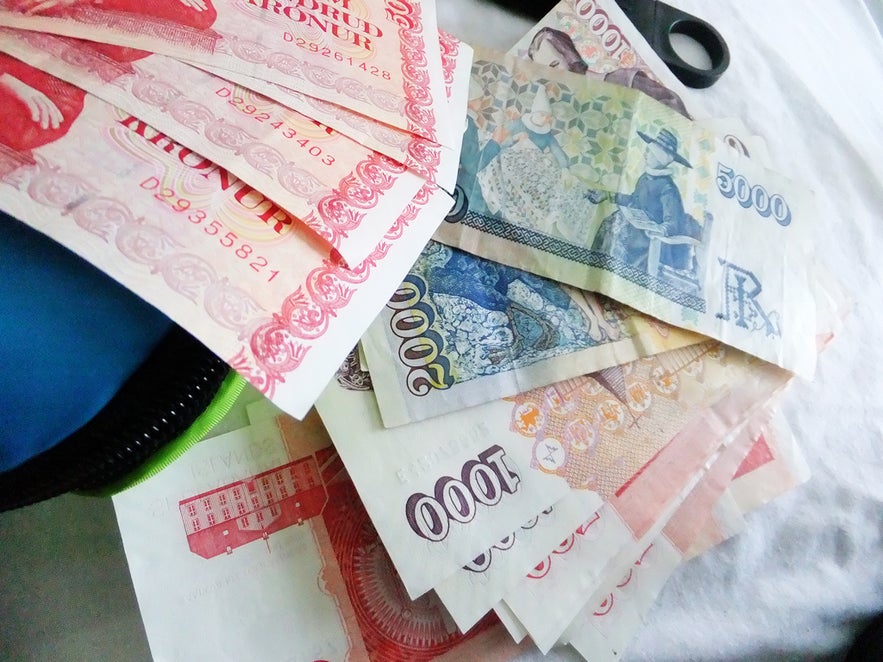 Photo from Flickr, by Viv Lynch. No edits made.
Photo from Flickr, by Viv Lynch. No edits made.
Shopping Tax-Free
Foreign visitors are entitled to a VAT-free purchase of at least 6,000 ISK for a single receipt when shopping in Iceland.
However, note that this is limited to purchases meant to be taken out of the country.
To get a tax refund, visitors should get a Tax Refund Cheque at the store counter after purchase.
Before flying out of Iceland, at the Keflavik International Airport, visitors can cash their cheques in the currency of their choice.
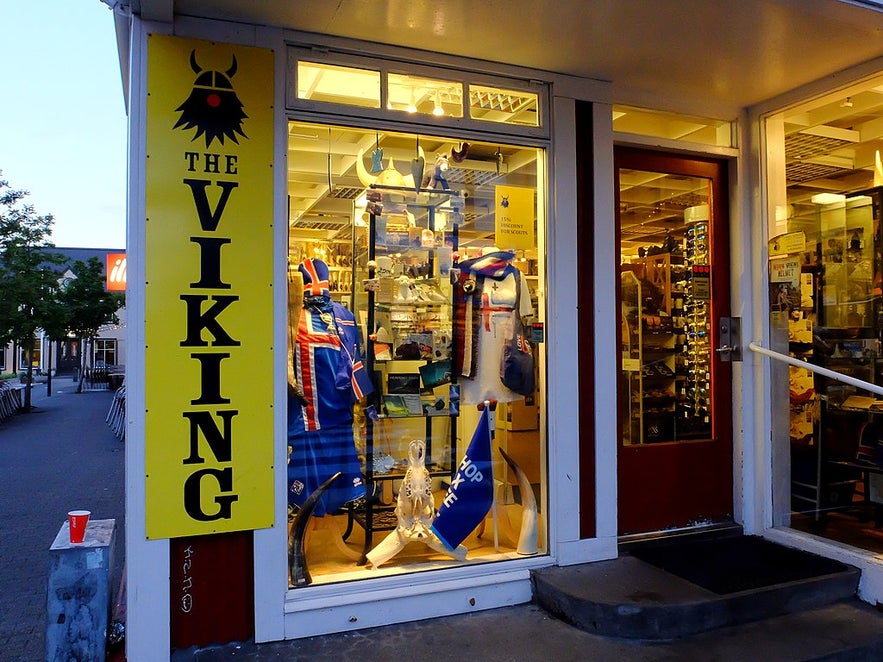 Photo from Wikimedia Commons, by Ziko van Dijk. No edits made.
Photo from Wikimedia Commons, by Ziko van Dijk. No edits made.
Frequently Asked Questions About Money in Iceland
Here are the answers to some of the commonly asked questions people ask about Iceland's currency.
What's the Best Currency To Bring to Iceland?
It's best to bring the Icelandic krona when you visit Iceland since only a few business establishments accept other currencies.
How Much Money Should You Bring When You Go to Iceland?
The short answer is the less money you bring, the better since most merchants in Iceland use cards. However, if we're talking about how much budget you should have while in Iceland, the answer is around 700 USD to 1,365 USD per person for one week.
This estimated amount is based on various expenses, including accommodation, food, and gas price, but if will, of course, depend on your itinerary.
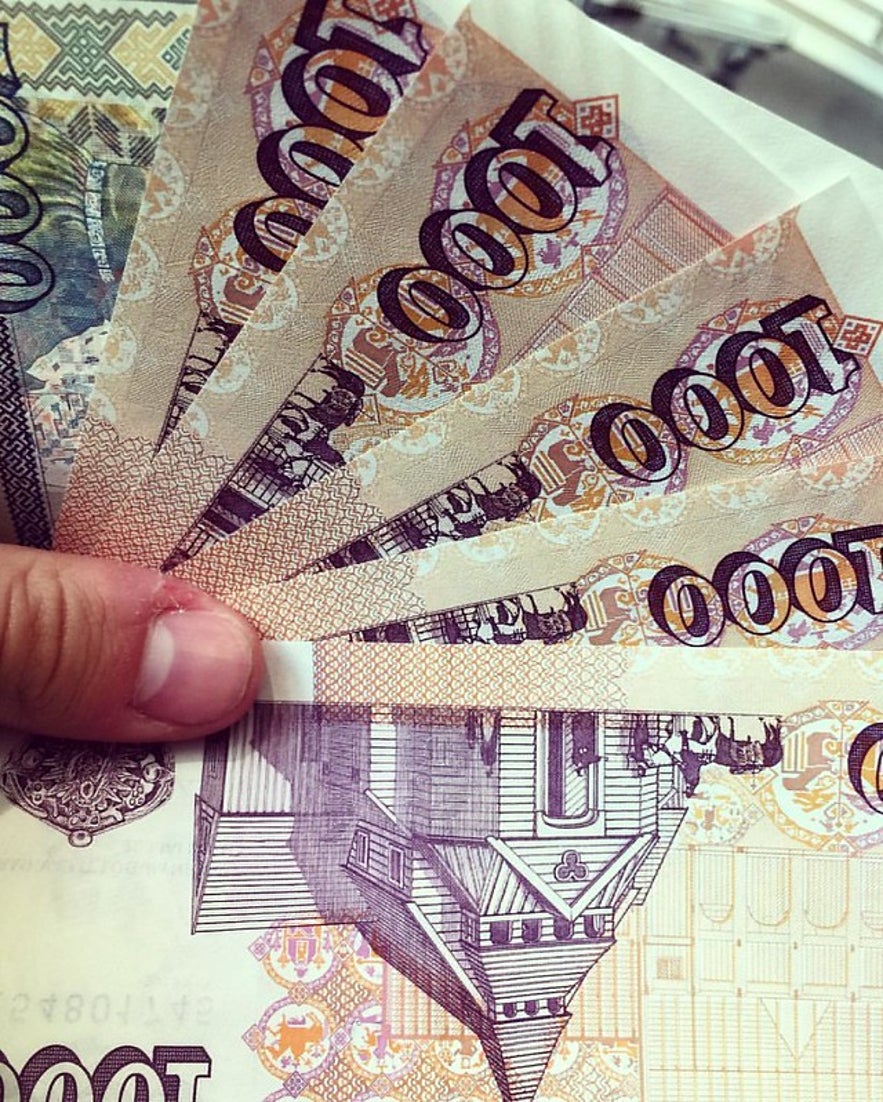 Photo from Flickr, by Caden Young. No edits made.
Photo from Flickr, by Caden Young. No edits made.
What Are the Different Ways To Pay in Iceland?
Most establishments in Iceland accept credit and debit cards for payment and cash.
Aside from those, prepaid cards, such as prepaid Visa cards, Apple Pay, and Google Pay, are also accepted in some establishments in Iceland.
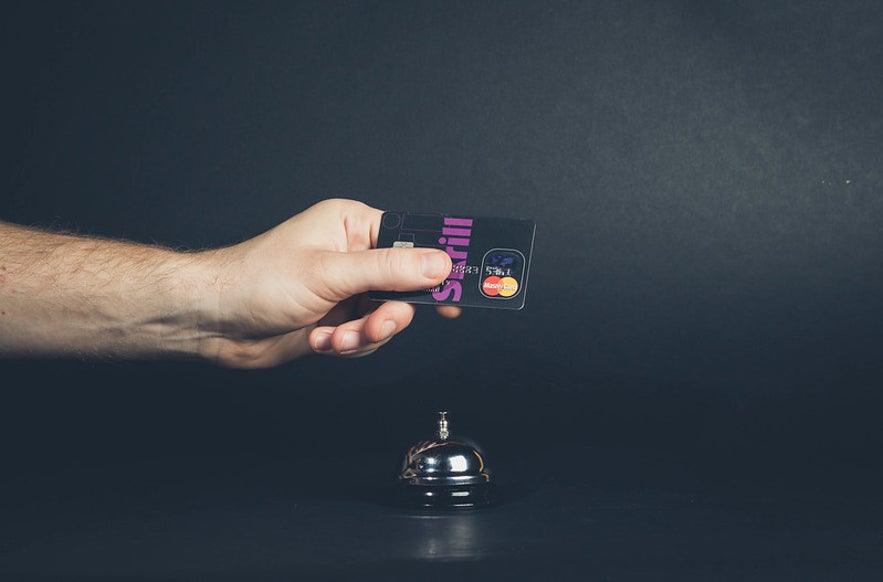 Photo from Flickr, by Marco Verch. No edits made.
Photo from Flickr, by Marco Verch. No edits made.
We hope this article helps shed light on all of your questions about Iceland's currency. In addition, we hope that the tips are enough so you can plan for the best Icelandic vacation. You can also check out our article on the best things to do in Iceland or the top five destinations in Iceland to help you plan.
Let us know if there are more questions you need to be answered. Don't hesitate to leave your comments and queries below.
บทความอื่นที่น่าสนใจ
พาเด็กเที่ยวไอซ์แลนด์ | คู่มือเที่ยวไอซ์แลนด์สำหรับครอบครัว
การพาเด็กๆ ไปเที่ยวไอซ์แลนด์จะเป็นอย่างไร ทัวร์แบบไหน กิจกรรมอะไร การผจญภัยแบบไหนที่เด็กๆ สามารถมีส่วนร่วมได้ สิ่งใดที่น่าสนใจมากที่สุดหากคุณจะพาครอบครัวมาเที่ยวพักผ่อนในไอซ์แลนด์ อ่านบทความต่อ...อ่านเพิ่ม
ขับรถในไอซ์แลนด์: คู่มือสำหรับโร้ดทริป
เรียนรู้ทุกสิ่งที่คุณอยากรู้เกี่ยวกับการขับรถในประเทศไอซ์แลนด์ ค้นหาว่าทำไมการขับรถในประเทศไอซ์แลนด์จึงเป็นเรื่องง่ายในฤดูร้อนและยากกว่าในฤดูหนาว เรียนรู้วิธีการและข้อกำหนดในการเช่ารถสำหรับการเดินทา...อ่านเพิ่ม
สภาพอากาศและอุณหภูมิในประเทศไอซ์แลนด์
ศึกษาทุกอย่างเกี่ยวกับสภาพอากาศในประเทศไอซ์แลนด์ เนื่องจากเกาะแห่งนี้สุดโต่งในทุกด้าน ไม่เว้นแม้แต่สภาพดินฟ้าอากาศ ดูอุณหภูมิเฉลี่ยของแต่ละเดือน สภาพอากาศของแต่ละฤดูกาล ความแตกต่างของสภาพอากาศในแต่ละพ...อ่านเพิ่ม

ดาวน์โหลดตลาดการท่องเที่ยวที่ใหญ่ที่สุดของไอซ์แลนด์ลงในโทรศัพท์ของคุณเพื่อจัดการการเดินทางทั้งหมดของคุณได้ในที่เดียว
สแกนรหัส QR นี้ด้วยกล้องในโทรศัพท์ของคุณแล้วกดลิงก์ที่ปรากฏขึ้นเพื่อเพิ่มตลาดการท่องเที่ยวที่ใหญ่ที่สุดของไอซ์แลนด์ไว้ในกระเป๋าของคุณ ป้อนหมายเลขโทรศัพท์หรือที่อยู่อีเมลของคุณเพื่อรับ SMS หรืออีเมลพร้อมลิงก์ดาวน์โหลด




















